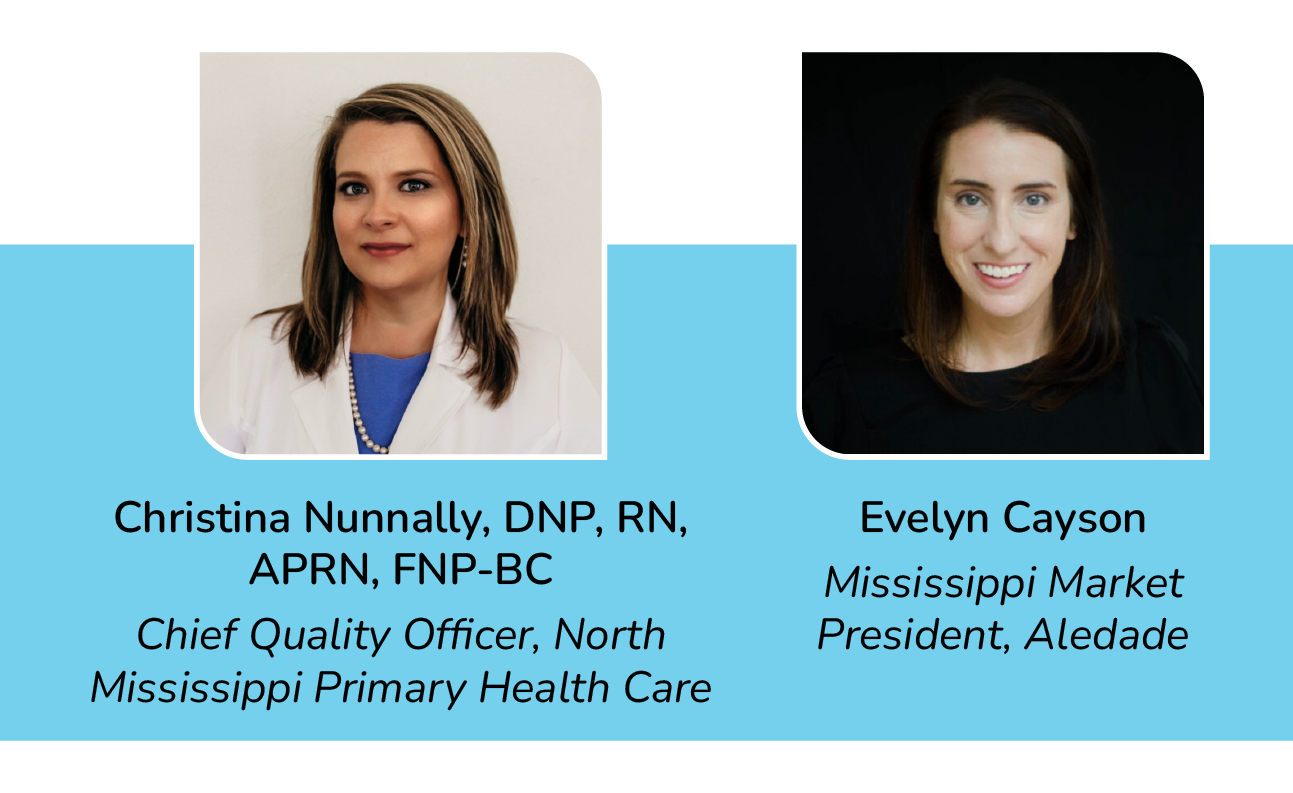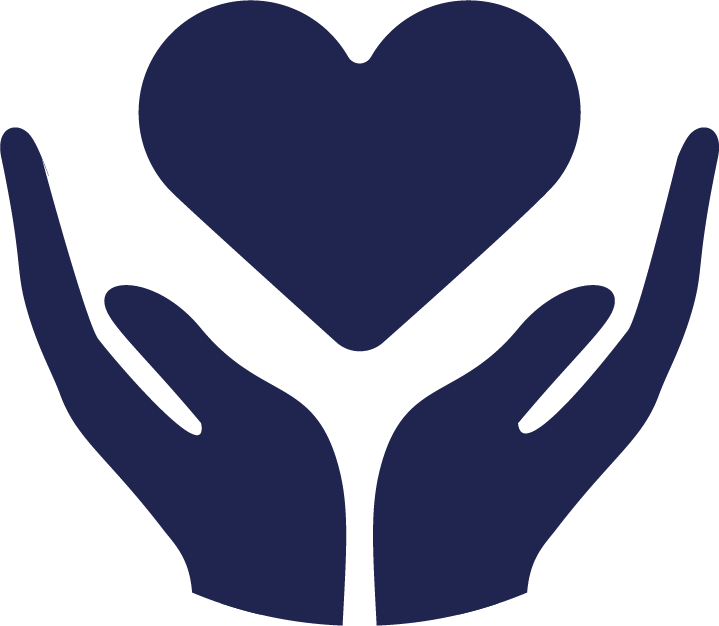Learn how Aledade’s Mississippi-based CHC-only ACO beat the odds to become a top earner in the 2021 MSSP.
2021 was a tough year for community health centers across the United States. As Americans’ health care was interrupted during the pandemic, care gaps widened, and patients became harder to reach. But for community health centers in Mississippi, these hurdles were not entirely new.
In 2019, 26.4% of Magnolia State residents aged 18 and older did not have a personal doctor (23.3% U.S.), and 23.6% reported their health to be fair or poor (18.8% U.S.).1 On top of this, a 2022 Commonwealth Fund report ranked Mississippi 50th in health care system performance.2
Despite these challenges, Aledade’s Mississippi accountable care organization, made up exclusively of community health centers, was able to improve health outcomes and achieve high marks in patient experience and care quality in the 2021 Medicare Shared Savings Program. As a result, it became the highest-earning CHC-only ACO in the program and the fourth highest earner overall.
Among these ACO participants was North Mississippi Primary Health Care, a large federally qualified health center that joined Aledade in 2020. We sat down with NMPHC Chief Quality Officer Christina Nunnally, DNP, RN, APRN, FNP-BC, and Evelyn Cayson, Aledade’s Mississippi market president, who shared five tips for health centers looking to succeed in value-based care. Click here to view a recording of our recent webinar on this topic.

1. Trade data for insight.
Compared to small primary care practices, community health centers tend to have an abundance of data, but it doesn’t always mean it is insightful or actionable. Cayson described this common phenomenon as DRIP, being “data rich and information poor.”
“Maybe you’re already getting feeds from the nearby hospital – but what else?” she said.
In joining the ACO, staff across NMPHC’s nine locations gained access to the Aledade App, which analyzes patient claims data, identifies care gaps, and processes more than 500,000 admission, discharge and transfer notifications per month. The result: point-of-care worklists and notifications that advise clinicians of what’s happening with patients outside their four walls, so they can make more informed care decisions.
2. Maximize each patient encounter.
As patients caught up on care post pandemic, NWPHC coordinated an aggressive outreach campaign, using both calls and text messages, to get patients in for needed services. And by working together with their practice transformation specialist to revise their workflows, Nunnally says the organization was able to get more out of each patient encounter.
“Now when a patient comes in, the first thing we look at is not their insurance. We look at things like whether they need a wellness visit or are taking medications like they should,” she said. “We are trying to level the playing field, so it doesn’t really matter who’s paying for this care. We want our patients to get high-quality care, every single time.”
As of November 2022, the center’s annual wellness visit completion rate is a remarkable 67 percent.
3. Get in a “value over volume” mindset.
Community health centers are accustomed to operating under the prospective payment system, which is tied to an individual patient’s utilization of the system in the health center – in other words, the volume of services. But being a part of an ACO is about being accountable for the value of patient care, according to the acuity that has been communicated to the payer via diagnosis documentation and diagnosis codes. Because this information is used to calculate the benchmark by which shared savings are calculated, understanding the mechanics of value-based care can make or break an ACO.
"We had been in an ACO previously but really didn’t see as much success as we would have liked. We started with Aledade in a really, really big knowledge deficit. We really hadn’t learned as much about how ACOs work, about how our practice was being measured.
“We had to learn about how our patients are attributed to our practice and what was the most efficient way to get and keep attribution for our practice. [….] We also had a huge learning curve for diagnosis coding. We never understood how that tied into how the MSSP works. So, we gained a lot of knowledge by working with Aledade,” Nunnally said.
4. Take TCM services one step further.
Many primary care organizations realize the value of transitional care management services, which are delivered after a hospital stay. TCM visits help ensure patients are supported when medications need to be reconciled, lab tests need to be followed up on, and specialist or home health services need to be arranged.
“Lots of health plans, ACOs, hospitals do hospital follow-up visits, and it is very important,” Cayson said. “But a piece that is sometimes missed is the emergency department follow-up. Typically when a patient is admitted to the hospital they were in the ER first.”
To encourage these check-ins, a workflow-driven follow-up process is integrated directly into the Aledade App for both hospital and ED visits. Aledade has found that 1 out of every 12 successful ED follow-up calls prevents an unnecessary return visit in 30 days, while 1 in every 7 TCMs prevents a readmission within 30 days for high-priority patients.
"Lots of health plans, ACOs, hospitals do hospital follow-up visits, and it is very important. But a piece that is sometimes missed is the emergency department follow-up. Typically when a patient is admitted to the hospital they were in the ER first."
5. Reinvest shared savings to address operational challenges.
Many community health centers benefit from grant funds in sustaining their operations; however, there are often restrictions on how these monies can be spent. Aledade member CHCs saw an average MSSP shared savings check of $196,665 in 2021 – and were free to use these dollars however they chose, be it rewarding their staff, establishing an on-site food bank or setting up a mobile clinic.
After receiving a shared savings check in 2020, NWPHC used the funds to reinvest in their value-based care program. They began by hiring a director of value-based care and three team members; they are now up to eight care coordinators across their nine locations. And according to Nunnally, the return on this investment has been realized by staff and patients alike.
“It’s a labor of love. You get into this thinking that you’re just getting in on the front end because eventually [value-based care] is going to be required. Then you see all of the meaningful things for your patients that are really going on. I can’t tell you how many patients we have discovered have some kind of social need or economic need just because we asked the right question during an annual wellness visit.
“We still have a long way to go; we have a lot of work to do. But, you know, you have to start somewhere,” Nunnally said.
Ready to get started on transforming your health center into a value-based care champion? Click here to connect with your local Aledade team.
1. Kaiser Family Foundation, https://www.kff.org/statedata/election-state-fact-sheets/mississippi/
2. Commonwealth Fund, https://www.commonwealthfund.org/publications/scorecard/2022/jun/2022-scorecard-state-health-system-performance



